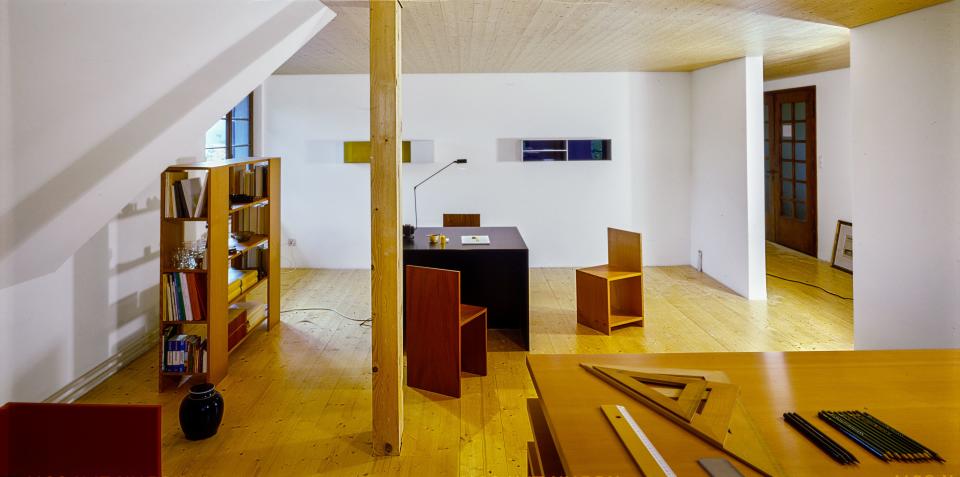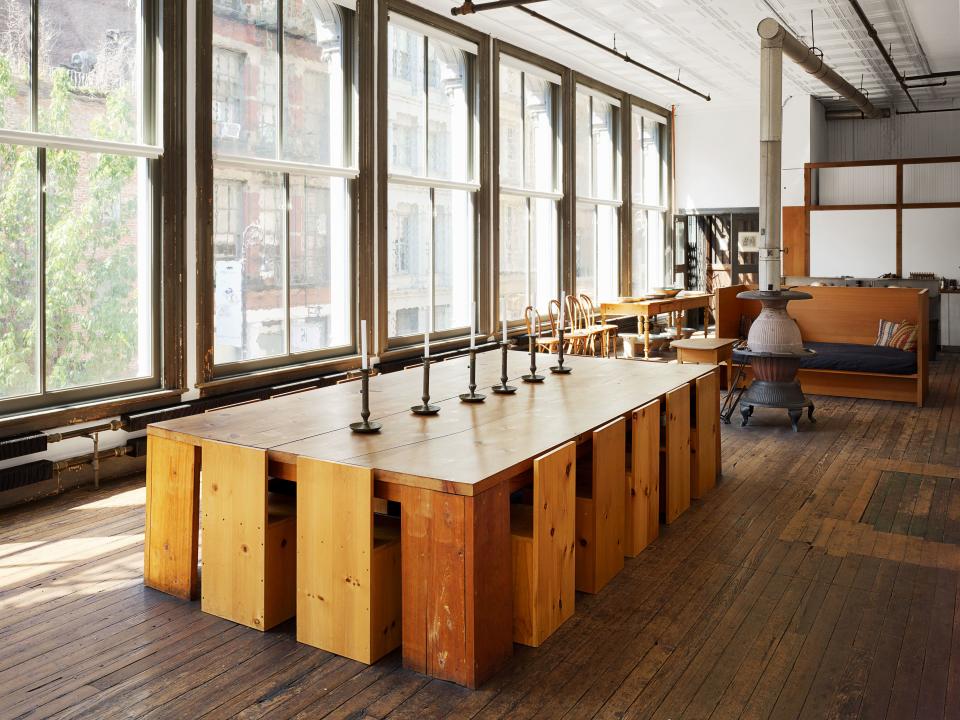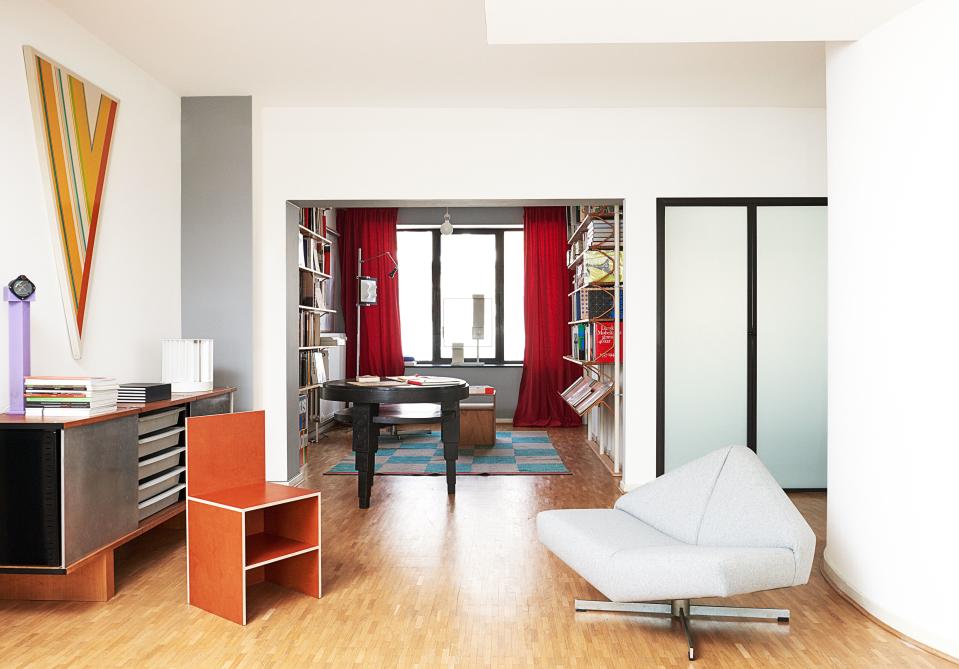The Story Behind Donald Judd's Iconic Chair 84 Design
It was 1982 in the remote desert town of Marfa, Texas, and Rainer and Flavin Judd, daughter and son of artist Donald Judd, had just moved into rooms of their own. Don, as they call him, made each of them a desk, but as Flavin explains, “Once you have a desk, you need a chair—a place to sit and do your homework.” In no time, their father sketched one (actually, there were 10 variations) and took the plans to a carpenter to have seats hewn in pine from a lumberyard.
The design couldn’t have been simpler, made entirely from flat pine boards. But in that cubic volume beneath the seat, the artist experimented: In one version he placed a shelf, in another a slanting board; another was solid on the front but recessed on the sides.


Soon the chair showed up in several of Judd’s homes, newly documented in Donald Judd Spaces, which is published this month by Judd Foundation and DelMonico Books/Prestel. A group gathered at La Mansana de Chinati, in Marfa, and 14 surrounded the dining table in his SoHo loft. In 1991, Judd began realizing them in plywood, for which a range of colors could be specified, and several of those punctuated his Architecture Office in Marfa. Only in 1993, when the chairs were numbered in an exhibition catalog for the Museum Boijmans van Beuningen in Rotterdam, did they get an official name: Chair 84.


While the seat might bear some resemblance to his sculptures, Judd was always clear: This was a chair, not art. “A work of art exists as itself,” he wrote in 1986. “A chair exists as a chair itself.” Still, for decades collectors have snapped up the designs, old and new (from $3,500 through Donald Judd Furniture). “People recognize the honesty behind his work,” says Manhattan dealer Cristina Grajales, who has sold several Judd furnishings. “With Chair 84 he gets to the essence of design. It’s about lines and functionality.” Accordingly, in Judd, a retrospective opening at New York’s MoMA this month, the furniture sits outside the exhibition proper, in a sixth-floor communal reading room, where, just as the artist intended, it can be put to good use. judd.furniture
Originally Appeared on Architectural Digest

